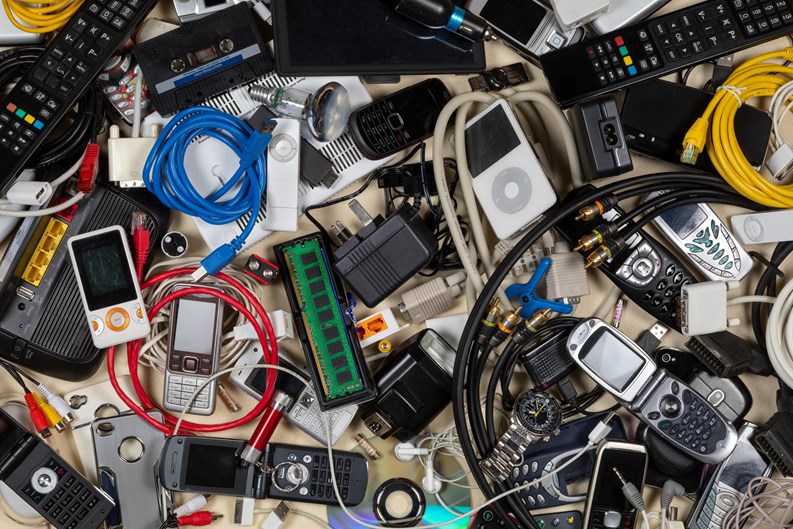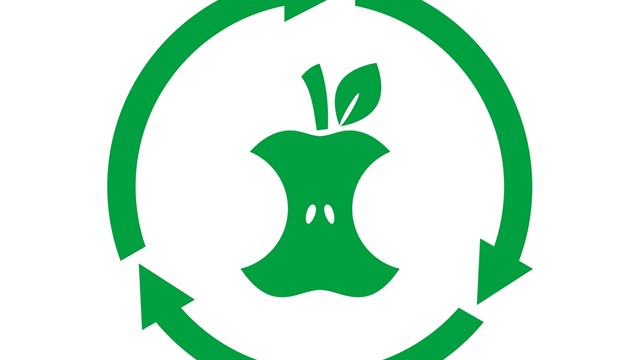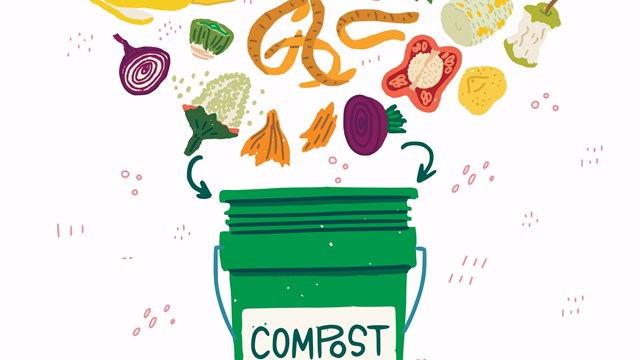As technology evolves and we continuously upgrade to the latest gadgets, older electronics are accumulating, creating a growing issue: electronic waste (e-waste). E-waste includes a wide range of devices such as office technology, smartphones, gaming consoles, computers, tablets, batteries, audio equipment, televisions, and many home appliances. According to the New York State Department of Environmental Conservation, New Yorkers discard over 400,000 tons of e-waste annually. Each new phone upgrade contributes to this mounting pile of discarded electronics. Remote work has increased the amount of office equipment in residences, and e-mobility innovations like electric bikes and scooters pose challenges for the safe disposal of batteries.
According to Christine Romero, executive director of the LES Ecology Center in New York City, “If you look back 20 or 30 years, things were built to last—the old, clunky cathode ray tube (CRT) television sets still work today—but we look for sleeker and often more affordable designs. Things damage and break down more easily, and we are creating so much waste. Electronics are smaller and more disposable, leading to an incredible number of toxic materials to landfills.”
According to the World Health Organization (WHO), electronic waste is one of the fastest-growing solid waste streams in the world, increasing three times faster than the global population. Discarded electronics pose a multitude of environmental and health risks due to the hazardous materials and chemicals found inside them. When improperly disposed of, these chemicals can leach into soil and water. Burning e-waste, a common but dangerous disposal method, releases toxic fumes and particulates into the air. E-waste can release up to 1,000 different chemical substances into the environment, including harmful neurotoxicants.
“While safe to use, most electronic devices contain lead, mercury, cadmium, plastics, and other heavy metals and toxic materials that could be leached into the environment when not properly recycled,” says John Shegerian, co-founder and chairman of Electronics Recycling International (ERI).
“In addition, lithium batteries have a risk of causing a fire when improperly managed. When not recycled, these materials must be extracted from mines that are often in areas with low health, safety, and environmental regulations. Responsibly recycling these materials means less has to be mined, and a circular economy can be achieved.”
In New York, the Electronic Equipment Recycling and Reuse Act mandates that New York City residents and businesses must recycle electronic waste through designated programs. The law specifically bans the disposal of certain electronics in regular trash. Instead, they must be taken to designated e-waste recycling facilities.
Regulations & Responsibilities
“E-waste can be considered hazardous or universal waste throughout the U.S., so commercial entities cannot dispose of it in the trash,” says Shegerian. “Different states have their own methods of ensuring proper management of the materials. In addition, 28 states plus DC have regulations in place to establish collection programs. This includes bans on disposal for all residents, fees on the sale of products to cover the cost of recycling, and the most common system—extended producer responsibility where manufacturers are required to cover the cost of some or all the collection and recycling costs.”
Romero notes that “In New York City, the onus is ultimately on residents to find ways to dispose of their e-waste, but property managers can do their part by dedicating specific areas of their building for e-waste collection and then requesting pickups. When the program first started, many of the materials we were seeing were what I would call ‘closet fill’—old computer hard drives and an assortment of cables—people held on to their electronic equipment, because they didn’t know what else to do with it.
“We didn’t have a streamlined process in the past, and it was frustrating for people to have to figure out what to do with these items. Now we are trying to create more opportunities in communities for people to recycle their electronics properly. Small events on a community level make it more accessible.”
New York City facilities manager Martin Robertson says residents are utilizing e-cycling services given the opportunity. “Whether it is having a dedicated room for materials or putting out e-cycle bins, there are ways property managers can be a part of the solution,” he says. Robertson puts together monthly correspondences to residents including e-cycle information.
He also has welcome packets for new residents with information on how to properly recycle and e-cycle. “It has to be as easy to e-cycle as it is to throw garbage down a trash chute,” he says. “All buildings are different in terms of what works best for them, but it all comes down to educating, implementing, and making it easy for residents to recycle and e-cycle.”
According to Shegerian, “On the device owner’s side, there is often some hesitation to get rid of old devices. This could be because people or businesses are worried about the personal or private data stored on their devices; they want to keep the device ‘just in case,’ or they simply don’t know where to take the material. This can all be solved with education—not just on where to go, but how the receiving entities properly recycle and destroy data. One terrific resource for both is recyclenation.com.”
On a larger scale, Robertson says, “We have systems in place, but we are a little out of order. Plastic use boomed in the 1960s and 70s because of convenience, but at the time we didn’t fully understand the long-term consequences. Technology is great and moving quickly, but we need to think about the environmental impact to reduce what we are putting in landfills. I would love to see manufacturers make it easier for consumers as well, with labeling of items or a universal code on materials that can be e-cycled.”
E-Waste Disposal Opportunities
The city has implemented various programs to manage the substantial amount of e-waste. The LES Ecology Center posts an upcoming event calendar on their website, www.lesecologycenter.org, to inform NYC residents of recycling opportunities. “Our residential e-waste collection program, ecycleNYC, designed collaboratively by ERI and DSNY (New York City Department of Sanitation), serves multi-family dwellings in all five boroughs. NYC buildings can sign up at nyc.gov/ecyclenyc. Local municipalities also have drop-off programs where they accept other materials. Individual properties outside of NYC can work with their municipalities or often find their own service providers,” says Shegerian.
During these events, residents can bring in automotive products such as antifreeze, car batteries, gasoline, motor oil, and transmission fluid; electronics such as computers, TVs, video equipment, cell phones, tablets, and gaming consoles; household products like cleaners, paint, nail polish, compact fluorescent light bulbs, flammable gas, fire extinguishers, thermostats, rechargeable batteries, e-cigarettes, and vape pens; and medical items like syringes, needles, scalpels, and medications.
Plug-in appliances or appliances containing chlorofluorocarbons (CFCs), like refrigerators and air conditioners, are not accepted. Materials collected are either recycled, blended for fuel, or sent to licensed hazardous waste treatment facilities for safe disposal. Electronics are recycled or refurbished for reuse. Special Waste Drop-Off Sites are available for New York City residents to drop off certain harmful products that are illegal to throw out in the trash or recycling. The sites are open every Saturday and the last Friday of the month for NYC residents, and only for non-commercial materials. Drop-off locations and more information can be found at www.nyc.gov/site/dsny/.
“The key to e-waste recycling is responsibly separating the materials,” says Shegerian. “We ensure that dangerous materials are not mixed with cleaner materials like plastics, steel, and aluminum. Each material then has its own method of safe and responsible recycling to prevent the release of dangerous substances.”
Robertson adds that “Communication and education are important. Now with e-cycling being a law and fineable, it gives the policy some teeth and encourages managers and superintendents to think outside the box in terms of what works best for their buildings to reduce what we put in landfills.”
As technology continues to advance, e-waste presents a formidable challenge, but it also offers an opportunity for collaborative action and environmental stewardship. As responsible global citizens, we must continue to adapt our waste management practices to address the growing problem of electronic waste. By supporting local recycling programs, adhering to legislation like New York City’s E-Waste Recycling Law, and staying informed about responsible disposal methods, we can all play a key role in easing the hazardous impacts of e-waste.
Kate Mattiace is the Associate Editor of CooperatorNews.










Leave a Comment